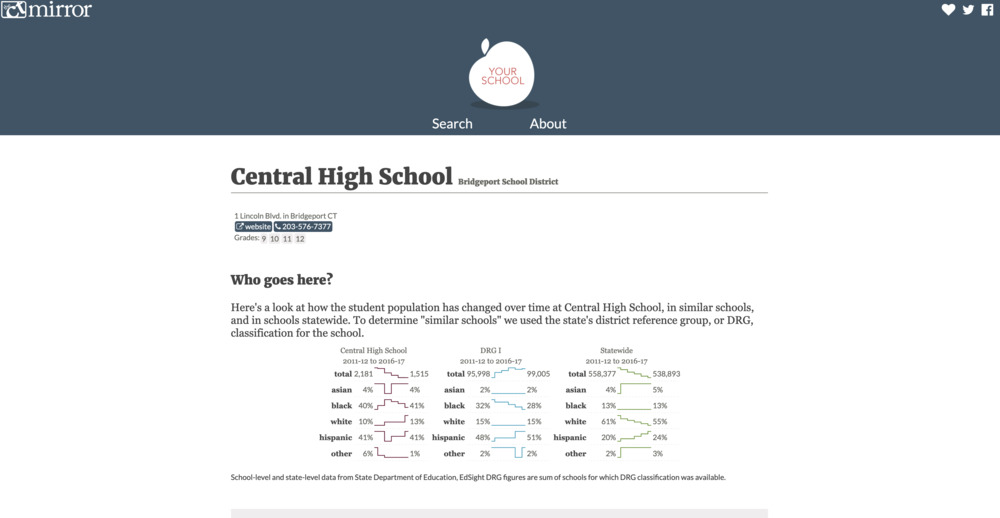Your School database, CT Mirror
The Your School database was built for CT Mirror in 2018.
When we started this project, we had several ambitious goals. We wanted to make a vast amount of data that the state tracks more accessible, with parents as the key user in mind. We also wanted to highlight the racial disparities that are prevalent in Connecticut’s highly segregated schools.
We decided to make something like a dashboard for each school, but rather than a wall of charts, we wanted it read like a narrative. In fact, we the visualizations themselves are quite minimal in design. I had just read a book by Edward Tufte, and I was very big on the idea of what he calls “sparklines.”

There are several types of in-line visualizations: sparklines, sparkline-style bar charts, tables with circular area charts, pictographs and simple tables. Throughout, color is used consistently to identify data as either relating to the particular school whose page we are on, the district reference group that school belongs to, or the aggegated state data. (If you’re wondering what a “district reference group” is, you should read through one of the school profiles!)
I served as the sole designer and developer on this project. Data was pulled primarily from a state database. I reconciled all of the data and built a backend database that fed this site. I built the backend Django of this web app with Django, and I used JavaScript and D3.js in particular for the data visualizations.
This project was launched originally at schools.ctmirror.org, but it was among a number of major data projects The Mirror shuddered. The Mirror has a very small staff and did not hire a developer after I left. All of the projects that had backend servers running on AWS, including this one, were eventually taken offline. This emphasizes the importance of sustainability, and right-sizing a project’s scope for the client. While the “server-side” architecture I used was highly conventional, the composition of a news room staff is not like a conventional software company, today I am much more aggressive about designing projects so that use the least infrastructure possible. Today I would instead build this site as a static site generator, meaning it would not require a database backend, instead of using Django. This would make the project more cost effective and simple to host in perpetuity, even if there was no developer around to update it.